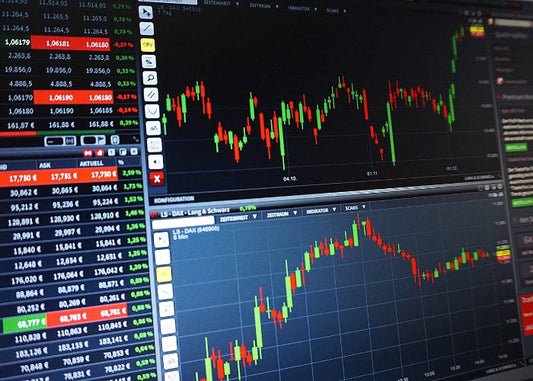What is the difference between stocks and stocks CFDs?

They are similar only at first sight: Contracts for Difference and Stocks are two different things.
With Contracts for Difference (CFDs) investors can profit from price movements of the underlying asset. Since shares or share indices often serve as an underlying and a reference value for CFDs, the question arises - especially for CFD beginners -: What is the difference between trading in shares and trading in CFDs?
For example, if you buy a share at a price of 100 euros and sell it for 110 euros, you will make a profit of 10 euros. (For simplification and better understanding, the following examples do not take into account costs such as transaction fee or spread, i.e. the difference between buying and selling price). Basically, with a CFD, investors also profit from the difference between buying and selling the CFD.
Bet on rising or falling prices with CFDs
However, a CFD is a leveraged product as opposed to a stock. Thus, investors can profit strongly with long CFDs from rising and with short CFDs from falling prices of the underlying. If the market expectation is correct, leveraged profits can be achieved. On the other hand, leveraged losses occur if the underlying asset moves in the "wrong direction". The leverage is possible because investors only deposit a small part of the underlying as security (margin). The smaller the margin, the greater the leverage.
Calculate leverage and run through scenarios

The direct leverage is calculated by dividing the position size by the margin. An example: A share costs 100 euros. For the CFD on the same stock, however, the investor only has to deposit 10 euros as margin, i.e. 10 percent of the stock's value. Thus, the leverage is 10. The calculation: 100:10 = 10. Suppose the investor buys a long CFD on the stock that increases by 1 percent to 101 euros. While the stock investor achieves an increase in value of 1 percent, the CFD investor can be pleased to book a profit of 10 percent. This is because his CFD has increased by 1 euro, just like the share. One euro profit on a stake of 10 euros, gives 10 percent profit.
But what happens if the CFD strategy does not work out in the example? Let's assume that the share price falls by 1 percent to 99 euros. Then the long CFD loses 1 euro. In relation to the capital investment of 10 euros, this would be a loss of 10 percent. The stock investor, on the other hand, would have lost only 1 percent.
Another example: If you want to buy 10 Apple shares at 150 dollars, you have to raise 1,500 dollars via the share. With CFDs, it is sufficient to deposit a so-called margin, which is often 20 percent. For example, it would be possible to move 50 Apple shares with the same 1,500 dollars and accordingly trade 50 CFD contracts on the Apple share. Or to put it another way, the leverage in this trade is 5 because in this example 20 percent, or $300, must be deposited to move a $1,500 position. If the Apple price rises from 150 to 165 dollars (+10 percent), the long CFD gains 50 percent: 10 Apple CFD shares times 15 euros per share results in 150 euros profit. Compared to the capital investment of 300 euros, the profit of 150 euros results in a profit of 50 percent.
CFD broker as contracting party
Another important difference between the two forms of investment: CFDs are not traded on the stock exchange, unlike shares. Investors trade CFDs directly via a provider - more precisely, via a broker who offers CFD trading. Contracts for difference are therefore legally an agreement between investor and broker. The broker sets the prices, determines the conditions, and offers corresponding trading opportunities via its platform. Against this background, it is important to choose a reliable broker. And: Before investors trade CFDs, they must open a securities account with their broker.

Limit losses with order supplements
One advantage of CFDs is their low costs. Thus, there are usually no or only low order fees. As with stock trading, investors can protect themselves from larger losses with order supplements. For example, with the addition of "stop-loss", with which investors set a price limit above which the CFDs are automatically sold at the next tradable price. A variant of this trading instrument is the "dynamic stop-loss". An example: An investor buys a long CFD on a share that is quoted at 100 euros. Via the online trading platform, he first sets the stop-loss mark at 90 euros. If the share price touches this mark, the CFD position is closed out at the market price.
Another scenario: In the course of trading, the underlying share rises to 110 euros. Now the investor pulls the stop-loss limit up to 100 euros. In this way, he can minimize possible losses further and from a certain mark on, no longer suffer any losses at all. Dynamic stop-loss orders are possible manually or automatically, as described in the example.
CFD trading made easy:
- With CFDs, investors can also bet on falling markets. The leverage is created by the margin.
- CFDs offer higher potential returns and are riskier than stocks.
- Investors choose the broker of their confidence
- Investors can keep losses in check with stop-loss orders.
No comments
Home
Trive
TriveHub





0 comments